Everyone around you can tell you, ‘Oh, you can do this,’ but then whenever you really start to believe in yourself, that’s when it comes to life. But you also have to be a little bit fearless.
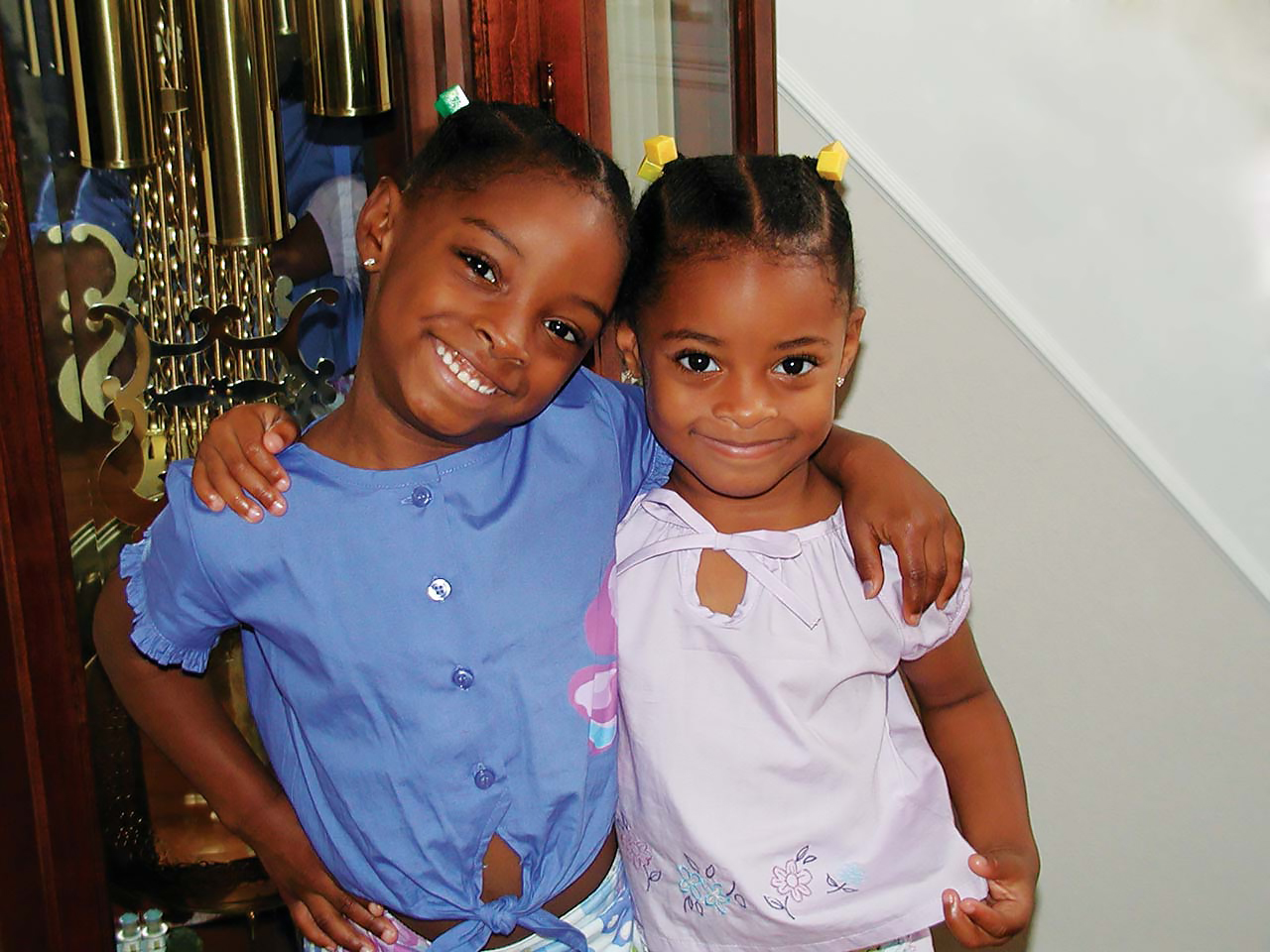
Simone Biles was born in Columbus, Ohio. Both of her parents struggled with alcoholism and drug addiction. Her birth father abandoned the family, and her mother, Shannon, was unable to care for Simone and her three siblings. After spending time in foster care, three-year-old Simone and her younger sister, Adria, were adopted by Shannon’s father, Ron Biles, and his second wife, Nellie. Simone’s older brother and sister were adopted by Ron Biles’s sister. Ron Biles is an Air Force veteran and former air traffic controller. Nellie is a trained nurse who owned and operated a string of nursing homes in the Houston area. They gave Simone and Adria a secure upbringing in Spring, Texas, a suburb of Houston, and the girls have always regarded Ron and Nellie as their mother and father. From the beginning, Simone was an active child, running and jumping wherever she could. Her natural strength and high energy combined with an unusual degree of physical daring. “Just a very brave child,” is how she describes herself at that age. On a daycare field trip at age six, she was taken to a gym and saw older girls practicing gymnastics. When the coaches saw the six-year-old Simone successfully imitating the feats of girls in their teens, they wrote a note to the family suggesting that the child take regular gymnastic classes. She began a training program at Bannon’s Gymnastix in Houston with Coach Aimee Boorman. The energetic child took to the training quickly and set out on the long road to becoming a champion.
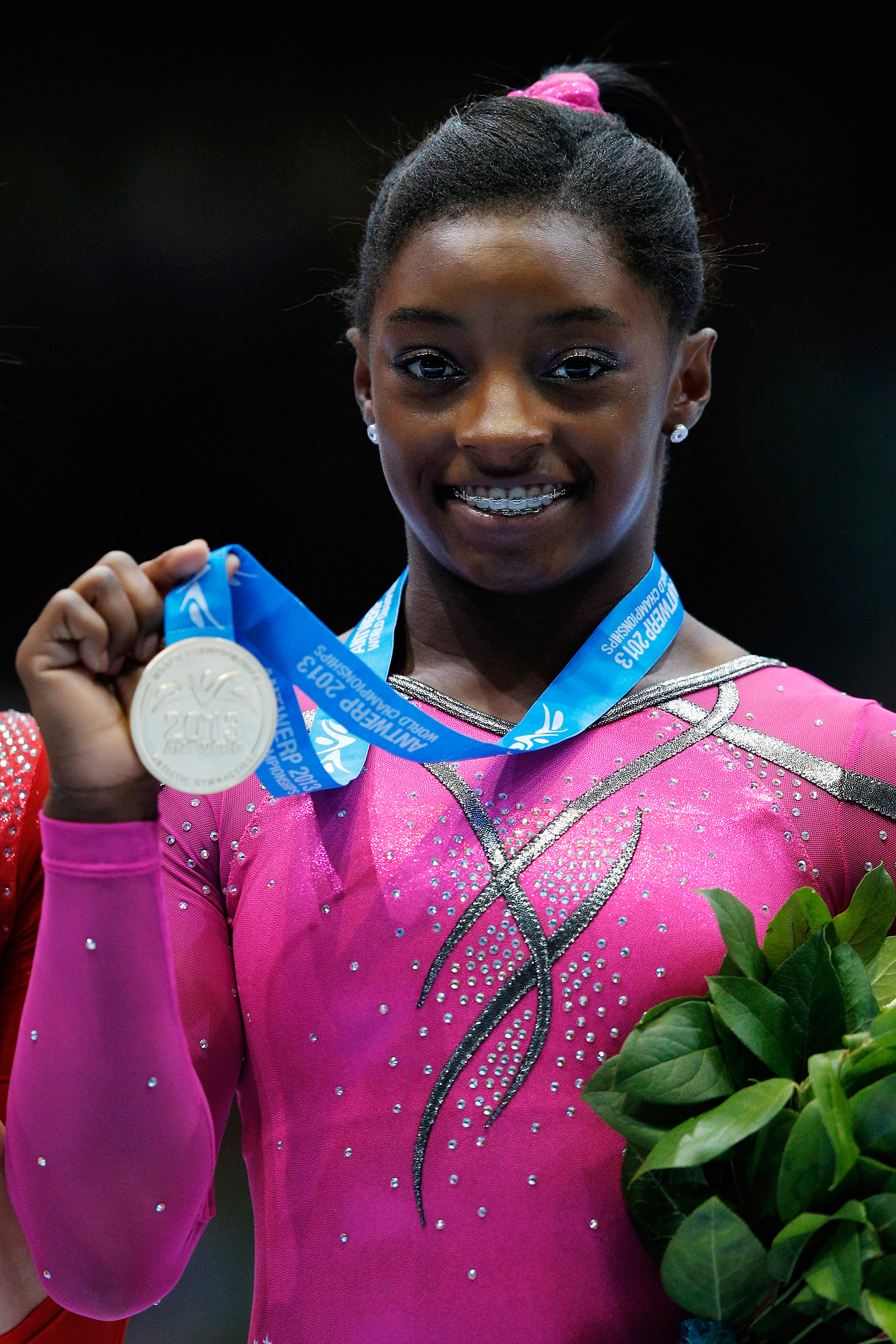
The exuberance and boundless energy that made Biles a star pupil at Bannon’s Gymnastix posed a different challenge to her teachers and classmates in public school. At an early age, she received a diagnosis of attention-deficit/hyperactivity disorder (ADHD). Like most young people with this diagnosis, she was prescribed the stimulant Ritalin. With its use, she was able to focus for longer periods on the task before her, whether academic or gymnastic. Nellie Biles was a great help to Simone as well, sitting down with her at the beginning of each year to write a list of goals for the next 12 months and to record her progress throughout the year.
Simon Biles made her first appearance in junior national competition at the 2011 American Classic in Houston, placing third in the all-around competition and first in the vault. Simone was now at a crossroads. Making the commitment to competitive gymnastics would require sacrifice. At age 14, Biles left her public school to be homeschooled. From then on, she would forgo the usual round of teenage social activities to train for six to eight hours a day.
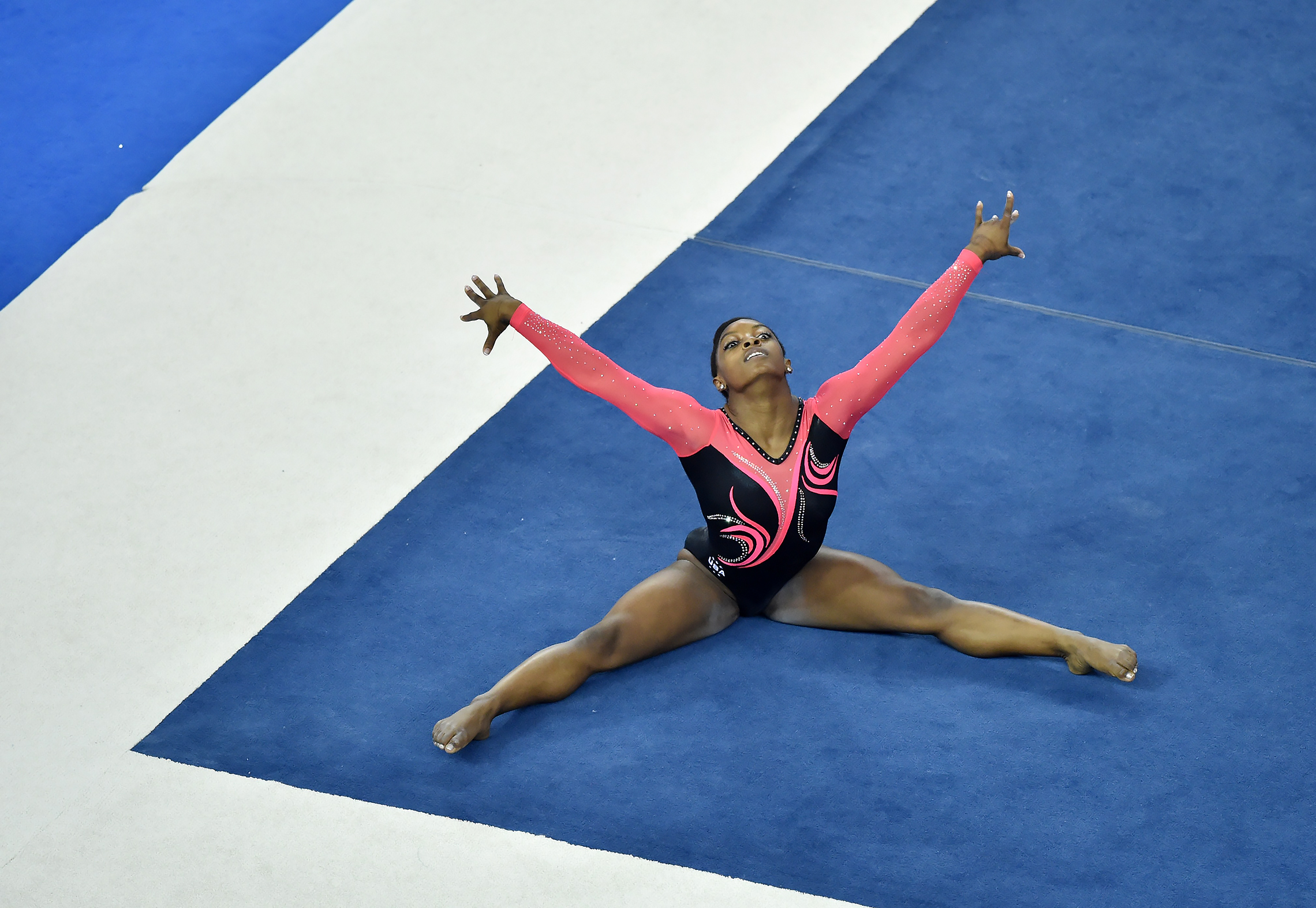
At the 2012 American Classic, she placed third on the balance beam, tied for second in floor exercise, and took first place in both the vault and all-around competition. At the 2012 U.S. Classic, she placed second in floor exercise and again finished first in vault and all-around. She finished first on vault again at the USA Gymnastics National Championships and was named to the United States Junior National Team.
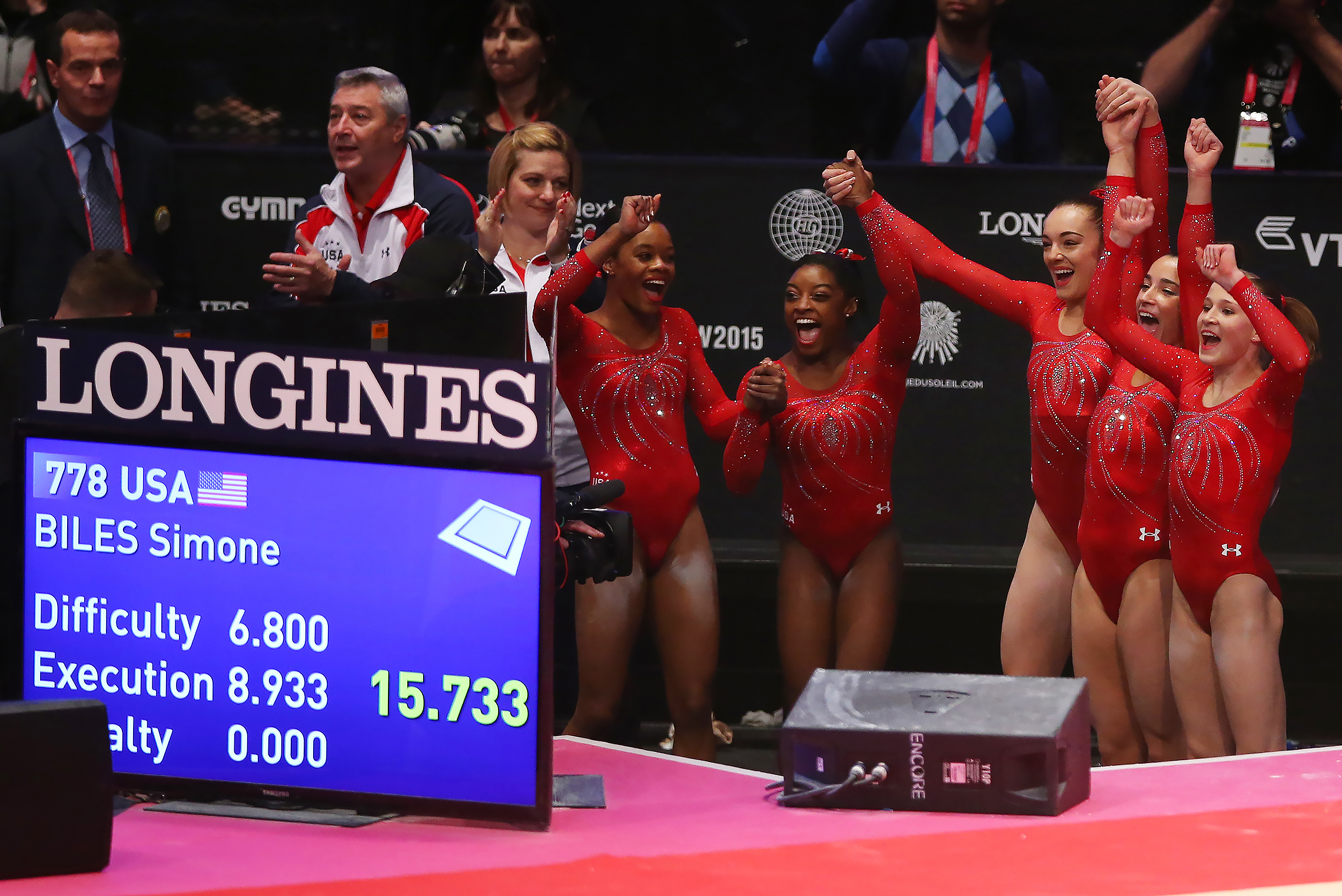
At age 15, she was a few months too young to compete for a place on the 2012 Olympic team, a circumstance which may have been more fortunate than it appeared at the time. When she made her senior international debut at the 2013 American Cup, her strength, particularly on the vault, was apparent to all. Competing for the United States at Jesolo, Italy, she took gold medals in all-around, vault, balance beam and floor exercise. In competition with teams from Germany and Romania at Chemnitz, Germany, she again won vault, balance beam and floor exercise, but trouble lay ahead.
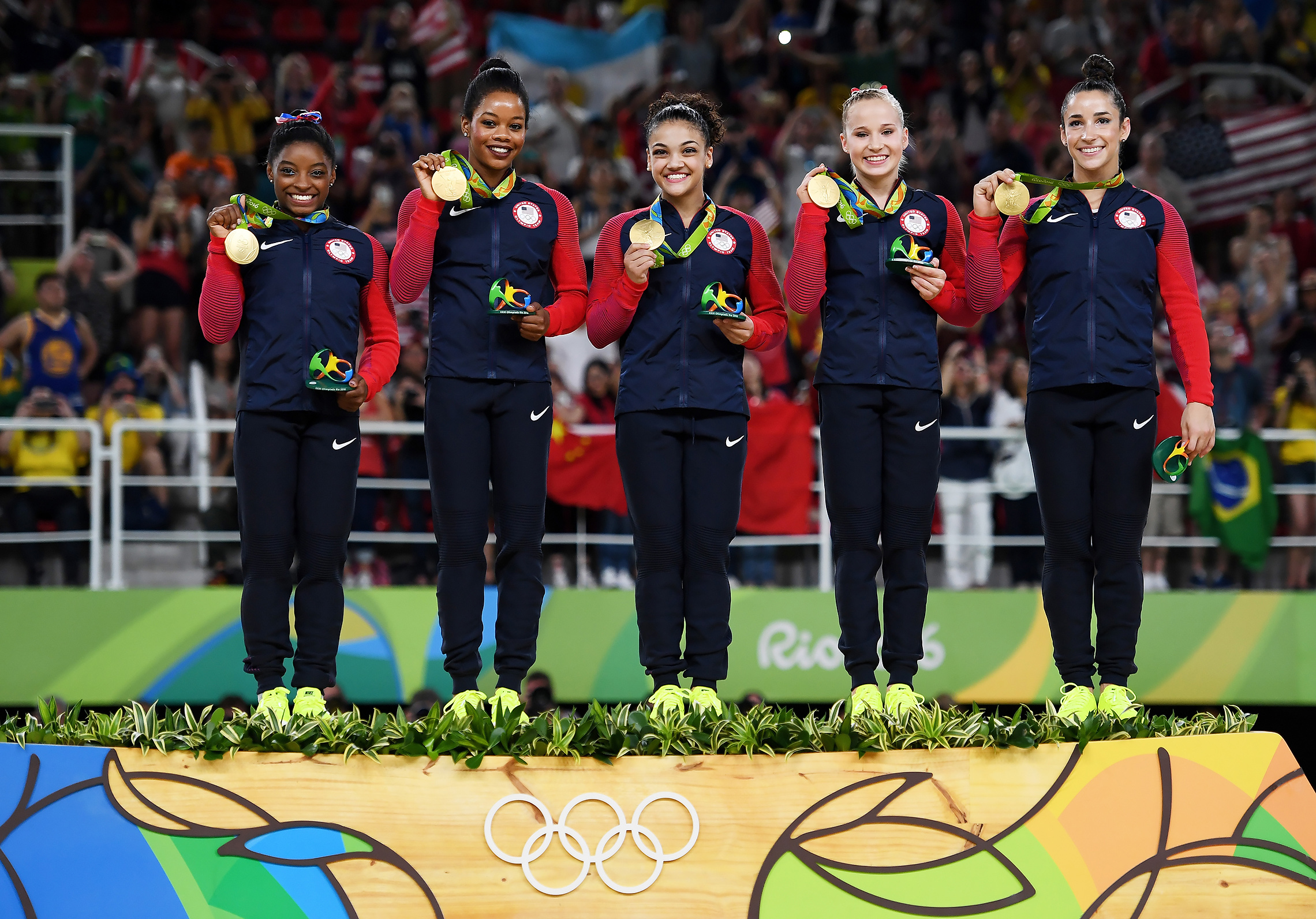
At the 2013 U.S. Classic, she lost control on the balance beam and fell during her floor exercise. Her coach, Aimee Boorman, was forced to pull her from the meet. Observers of the gymnastics circuit wondered openly whether her undeniable strength and agility were enough to overcome some inner deficiency. Biles consulted a sports psychologist and attended a private training camp with legendary coach Márta Károlyi. Biles does not discuss the substance of these sessions in detail, but something clicked. She learned to put the expectations of others out of her mind and enjoy her performance in the moment. Only three weeks after her disastrous showing at the Classic, she won the USA Gymnastics National Championship and was named to the Senior National Team. Two months after that, she won World Gymnastics Championships in Antwerp, Belgium — her first international title — scoring first on floor exercise, second on the vault and first in all-around. She has not lost a meet since.
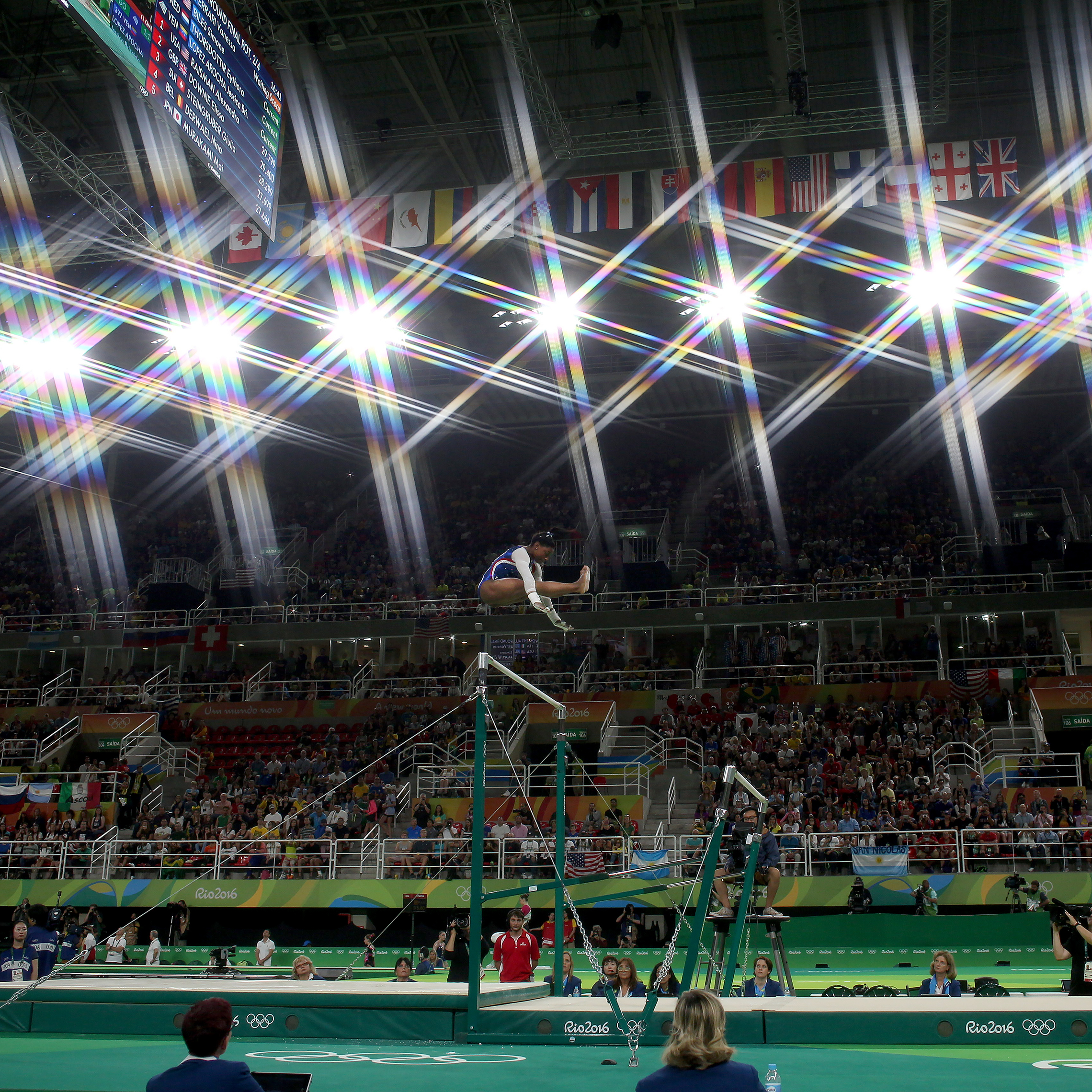
Biles was setting a new standard of performance in her sport. The height of her jumps, the speed of her turns, and the security of her landings set her apart from all competitors. Under the historic ten-point system of the International Federation of Gymnastics, a gymnast’s performance in each event was rated on a fixed scale of one to ten. This system encouraged competitors to perfect traditional skills, and above all, to avoid making mistakes, rather than experimenting with new moves. Under a new open-ended scale, instituted by the federation in 2006, higher levels of difficulty could be recognized, and Biles was prepared to push the envelope. On the vault and balance beam, she added extra twists and flips to her dismounts. While she recovered from a knee injury, her coach suggested that she conclude a double layout (flipping end over end with straight legs and body) by executing a half-twist and landing on one foot, sparing the tender knee. Biles introduced the new skill at the 2013 World Championships; it has now entered the repertoire and is known as the Biles.
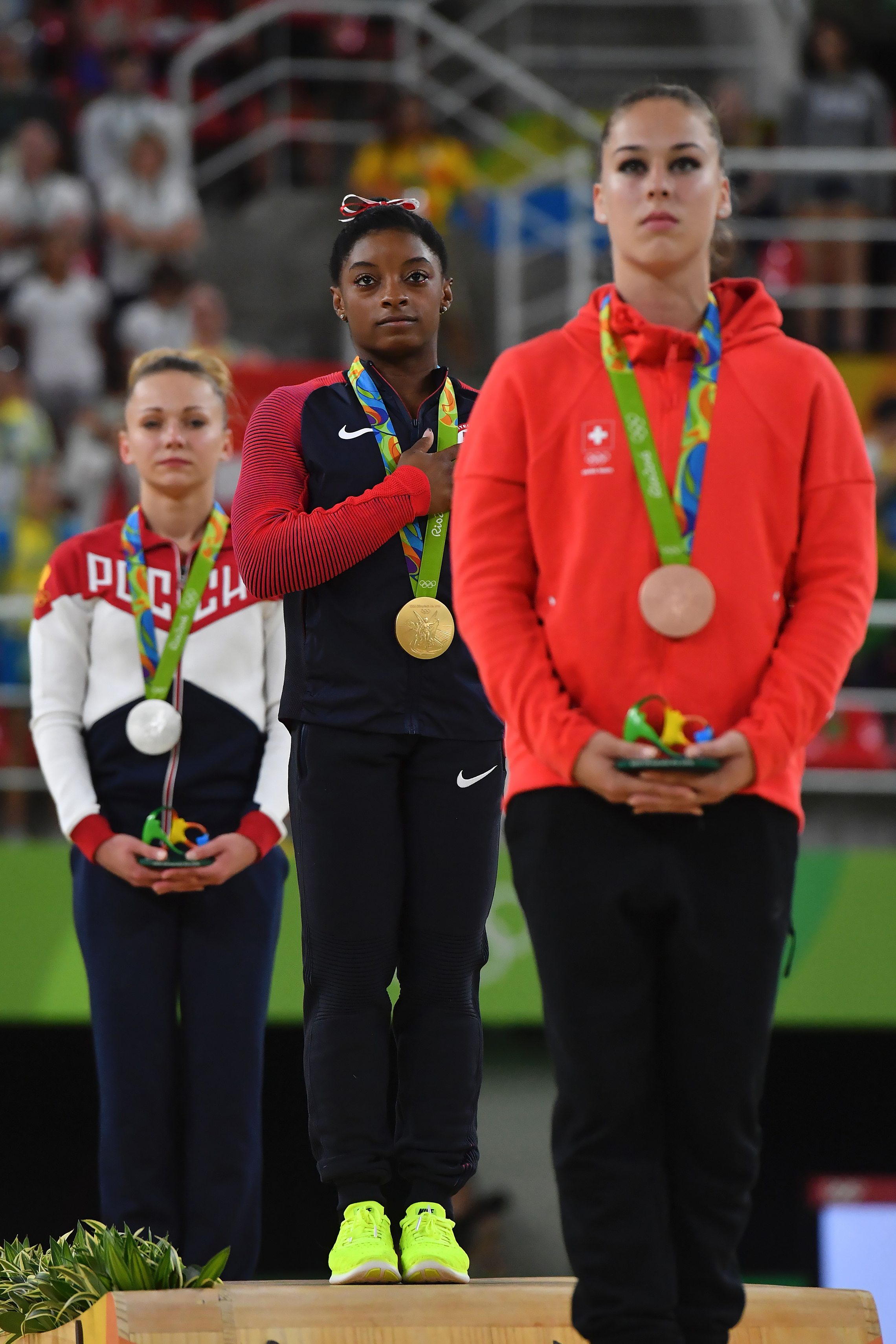
In 2014, Biles and her coach, Aimee Boorman, ended their relationship with Bannon’s Gymnastix. Ron and Nellie Biles have opened a new facility, the Word Champions Centre, in Spring, Texas, where Boorman and Biles trained for the subsequent seasons. A shoulder injury kept Biles out of competition at the beginning of the 2014 season, but she returned in the 2014 U.S. Classic in Chicago, tying for first on the balance beam, taking first place in vault and floor exercise, and winning the all-around by a wide margin. She now routinely finished ahead of her nearest competitors by margins of whole points rather than factions, as is more customary. At the 2014 USA Gymnastics National Championships, Biles tied for the silver on balance beam, despite a fall during her final routine of the two-day meet. She won the gold in the vault and floor exercise to emerge as national all-around champion after two days of competition, finishing more than four points ahead of her nearest competitor. Later that year, at the World Artistic Gymnastics Championships in Nanning, China, Biles took a silver medal in the vault, gold in the balance beam and floor exercise, and won her second consecutive world all-around title.
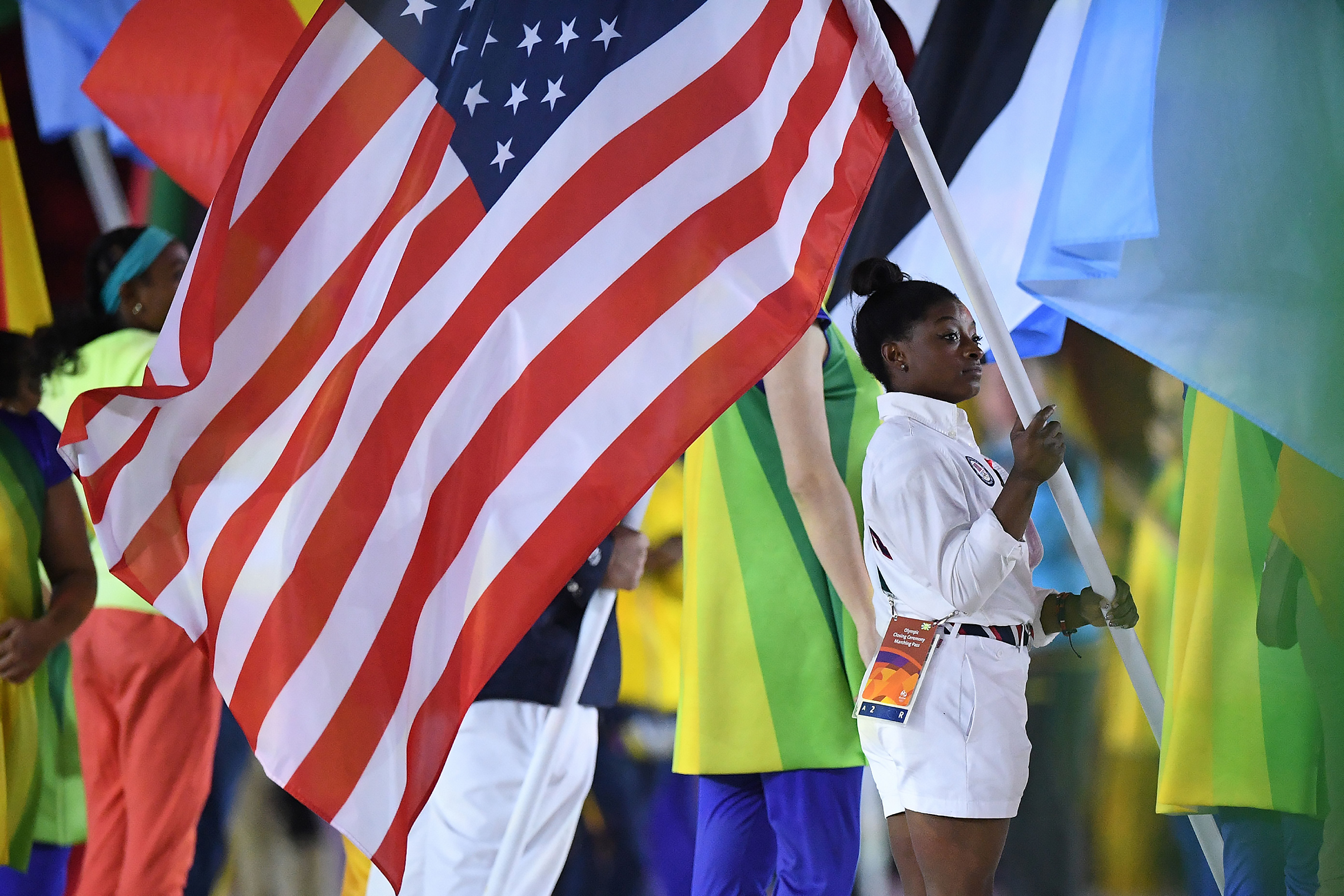
Biles began 2015 with victories in the AT&T American Cup in Arlington, Texas and the City of Jesolo Trophy in Italy. At that year’s U.S. Classic, she finished first in the all-around competition, with first place finishes in balance beam, vault and floor exercise. Although she had won early acceptance to UCLA, she made the decision to become a professional, thereby forfeiting the opportunity to compete for UCLA.
Her winning streak continued with a third consecutive all-around championship at the 2015 U.S. National. She won a third international title at the World Championships in Glasgow, Scotland. In Glasgow, she took gold medals in balance beam and floor exercise again, bringing her total medal and gold medal count to the highest ever won by any female in world gymnastics competition. She was named Team USA Athlete of the Year.

She embarked upon a new year of competition, one that would see her participate in the Olympics for the first time. She began the year winning an all-around victory at the Pacific Rim Championships with the highest scores on vault, floor and balance beam. At the 2016 USA Gymnastics National Championships, she again won the titles in vault and floor exercise, winning the all-around title.
As expected, Biles was selected for the 2016 Olympics team, and Coach Boorman was chosen to head the USA Gymnastics Women’s Team. The 2016 Olympic Games were held in Rio de Janeiro, Brazil. On August 9, 2016, Biles led the American gymnasts to victory in the team event, with a score more than eight points ahead of the second-place Russian team. Two days later, Biles took the gold medal in the all-around event, with the highest scores on vault, floor and balance beam. She won a second individual gold medal in the vault. Despite her first-place finish on the balance beam in the all-around competition a few days earlier, an unexpected error marred an otherwise impressive performance on the balance beam final. She still received a bronze medal for that event. She ended by winning a fourth gold medal in the floor exercise final. Besides tying a number of other world records, she set a new American record for most gold medals in gymnastics at a single Olympics Games. Between her performances at the Olympics and in World Championship competition, she has won 19 medals, making her the most decorated American gymnast of all time. As Team USA’s outstanding star of the Games, Biles was chosen by her teammates to carry her country’s flag in the closing ceremonies.

In the wake of the Games, Russian computer hackers gained access to the medical records of Biles and other Team USA athletes. They disclosed that Biles had tested positive for Ritalin and tried to use this information to discredit her performance. Biles freely admitted that she has long taken Ritalin for ADHD and the Olympics Committee confirmed that she had received a therapeutic exemption to continue her medication while competing. Her forthright discussion of her experience with ADHD gave encouragement to many young people in similar situations.
After 13 years of incessant practice and competition, Biles decided to take a year off before resuming training for the 2020 Olympics. In 2017, she was given the ESPY Award for Best Female Athlete of the Year. After her lifelong coach Aimee Boorman moved from Texas to Florida, Biles resumed training with Coach Laurent Landi.
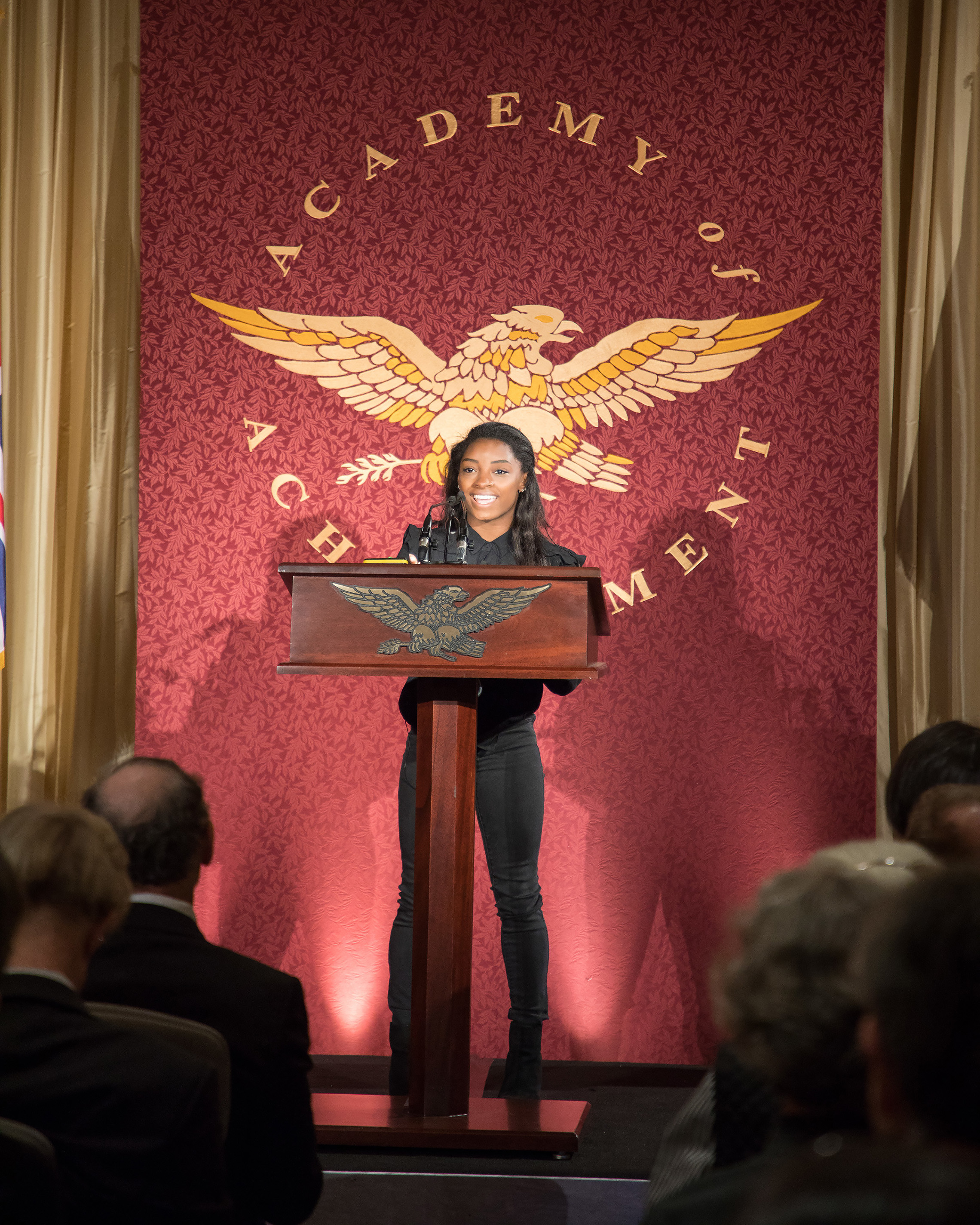
The world of female competitive gymnastics was rocked in early 2018, as more than 150 former patients of Team USA doctor Larry Nassar had accused him of sexually abusing them while they were under his care. On January 18, Simone Biles added her name to the list. Nassar was sentenced to 60 years in prison on federal child pornography charges, and in two different trials, was sentenced to 40 to 175 years for multiple counts of sexual assault. He will spend the rest of his life in prison. Simone Biles praised the judges’ decisions in the case and called on the U.S. Olympic Committee to reach out to abuse survivors such as herself.
After a 711-day layoff, Simone Biles made a triumphant return to public competition at the U.S. Classic in July 2018. She posted the highest scores on vault, floor exercise, balance beam, and all-around performance. At the USA Gymnastics National Championships the following month, Biles won gold medals in all four events — her first medal for the uneven bars, previously regarded as her weakest event — and took the all-around title. She is only the second woman in history to win all five gold medals at the National. Biles wore a teal-colored leotard for her historic performance, a gesture of solidarity with all victims of sexual assault.
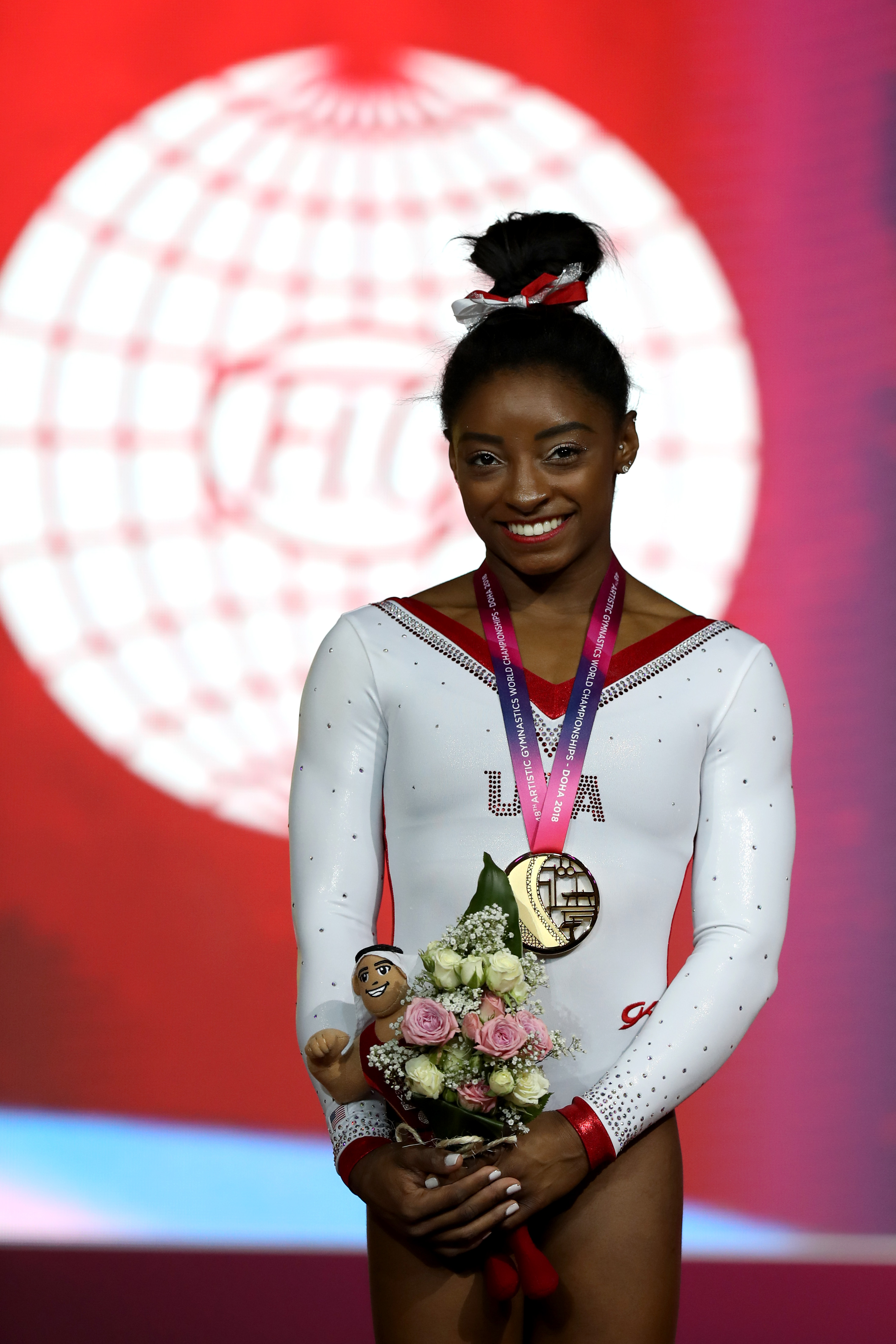
At the 2018 World Gymnastics Championship, Biles won a medal in every event: bronze in the balance beam, silver in the uneven bars, and gold medals in the floor exercise, vault and team final, and for all-around individual performance. The first American competitor to win a medal in every event at the World Championship, she achieved this remarkable performance while suffering from a painful kidney stone. Delaying treatment until after the competition, she declined pain medication that would have prevented her from qualifying under anti-doping regulations.
At the World Championships held in Stuttgart, Germany in October 2019, she led Team USA to its fifth consecutive victory and won five more gold medals — in balance beam, floor exercise, vault, all-around, and as a member of the winning team. This raised her total number of medals in world competition to 25, an all-time record. She is now the most decorated gymnast in history.
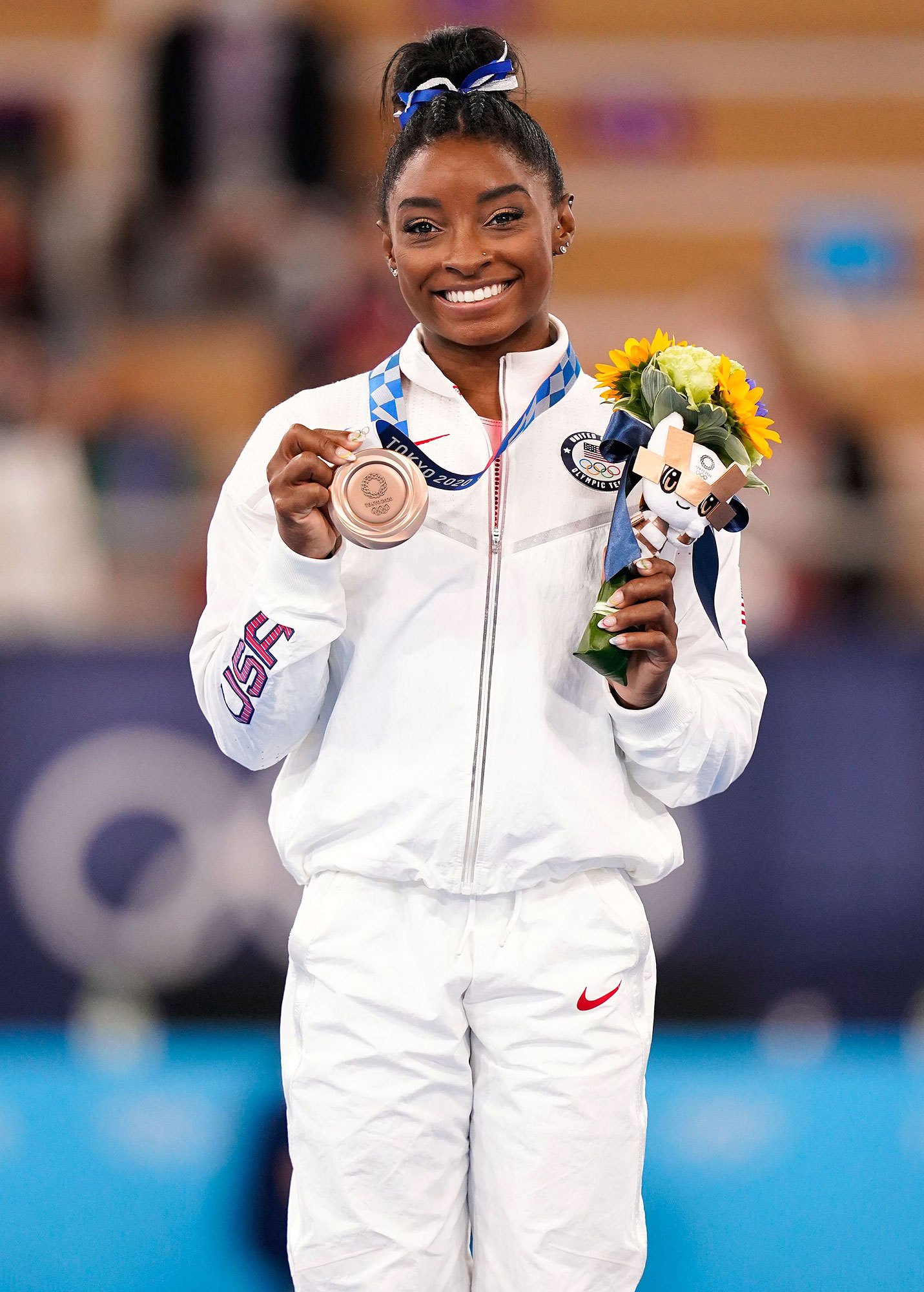
The gymnastics world was looking forward to seeing Simone Biles dominate her sport at the 2020 Olympics in Tokyo, but the competition was postponed for a year due to the global outbreak of the novel coronavirus COVID-19. Other public events were suspended as well, and Simone Biles did not perform in public competition for over a year. In May 2021, when she returned to competition at the U.S. Classic in Indianapolis, she stunned audiences with an unprecedented feat in her vaulting routine: a Yurchenko double pike, requiring her to push off from the vaulting table with her hands and flip twice before landing. She is the first woman ever to perform this feat in competition. Ms. Biles placed first in all-around competition at this event, as she did again two weeks later at the U.S. Gymnastics Championship. This was a record-setting seventh all-around win in national competition; she has captured all-around honors in every event she has entered since 2013.
At the 2020 Tokyo Summer Olympic Games, held between July 23 and August 8, 2021, Biles left an indelible mark, changing the narrative from winning medals to championing athlete mental health and well-being. In the very first event, the team competition, Biles withdrew after completing only one vault, citing an inability to perform due to mental stress and a lack of “air awareness.” Then, on the last day of gymnastics contests, Biles made a dramatic return, capturing a bronze medal in the balance beam — her seventh career Olympic medal — tying her with Shannon Miller for the most ever for an American gymnast.
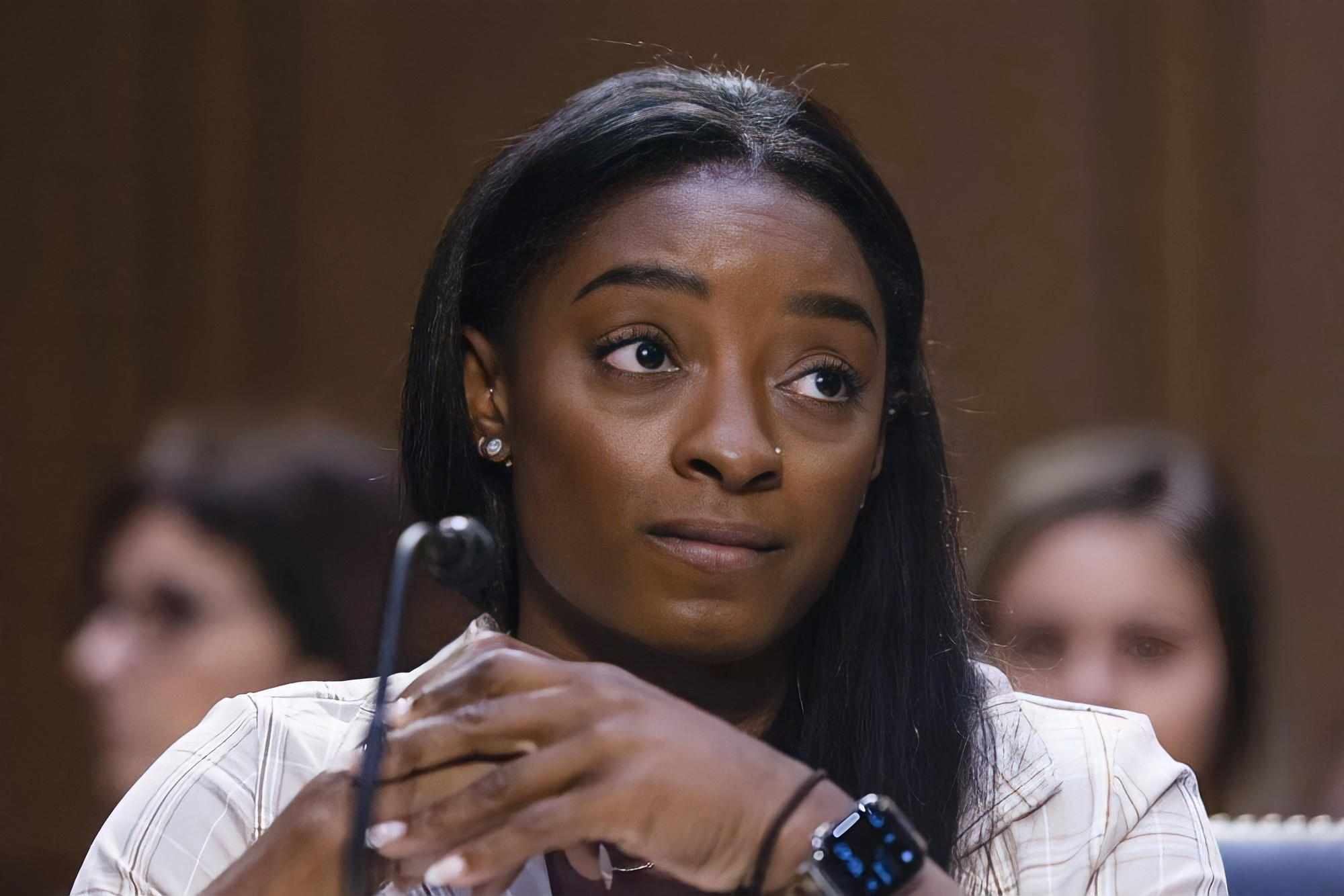
In June 2022, Simone Biles and more than 90 women and girls filed $1 billion in claims against the FBI for its mishandling of sexual assault allegations raised against then national gymnastics doctor, Larry Nassar, in 2015. The claimants include McKayla Maroney, Maggie Nichols and Aly Raisman, the elite gymnasts who were first identified in the summer of 2015 as having been sexually abused by the then-doctor to the national women’s gymnastics team under the guise of medical treatment.
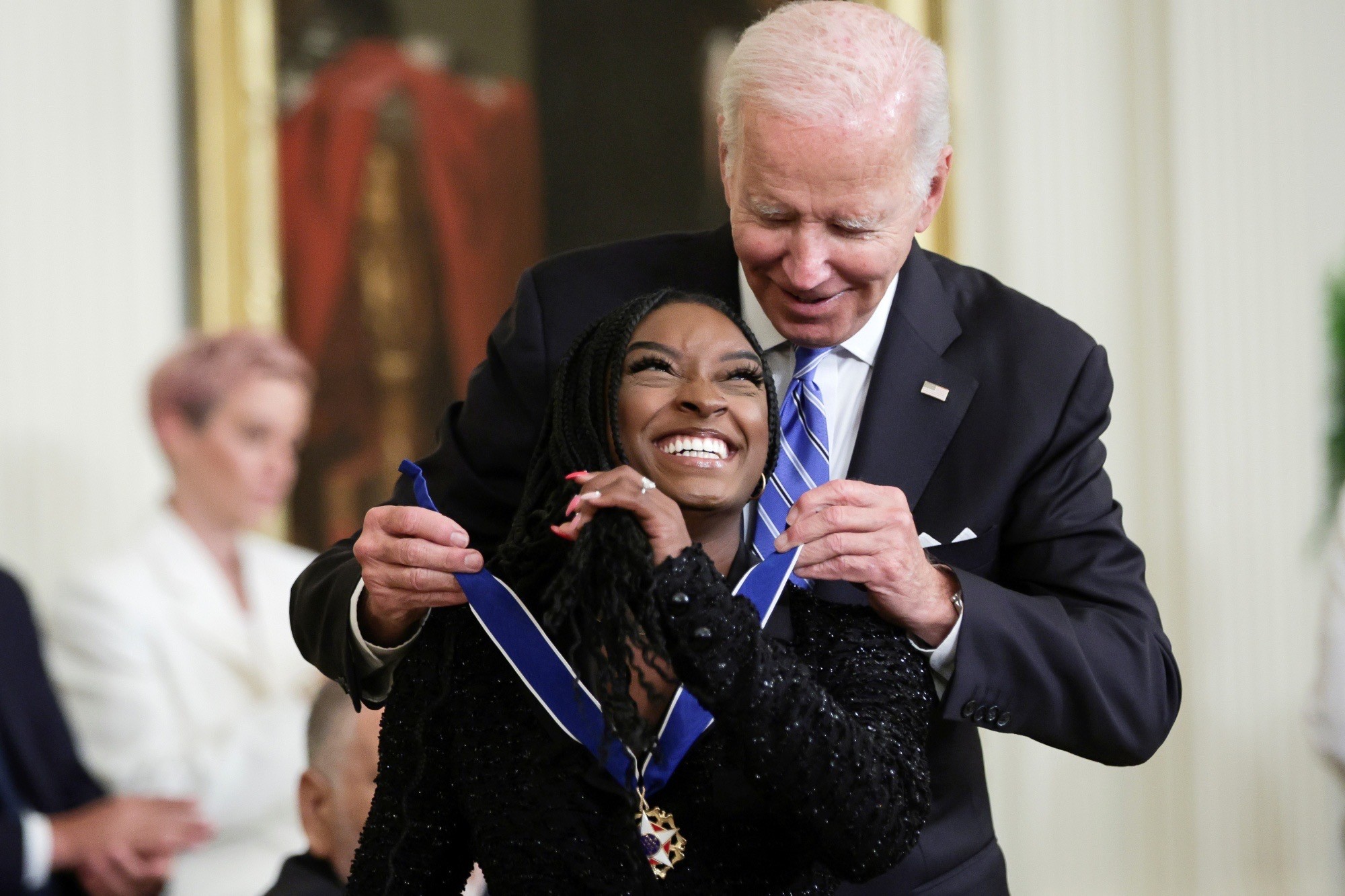
President Joe Biden, on July 7, 2022, presented the nation’s highest civilian honor, the Presidential Medal of Freedom, to 17 people, including gymnast Simone Biles, the late John McCain, the Arizona Republican whom Biden served with in the Senate, and gun-control advocate Gabby Giffords. “Today, she adds to her medal count,” Biden said as he introduced Biles. Biles, 25, became the youngest person to ever receive the Presidential Medal of Freedom.
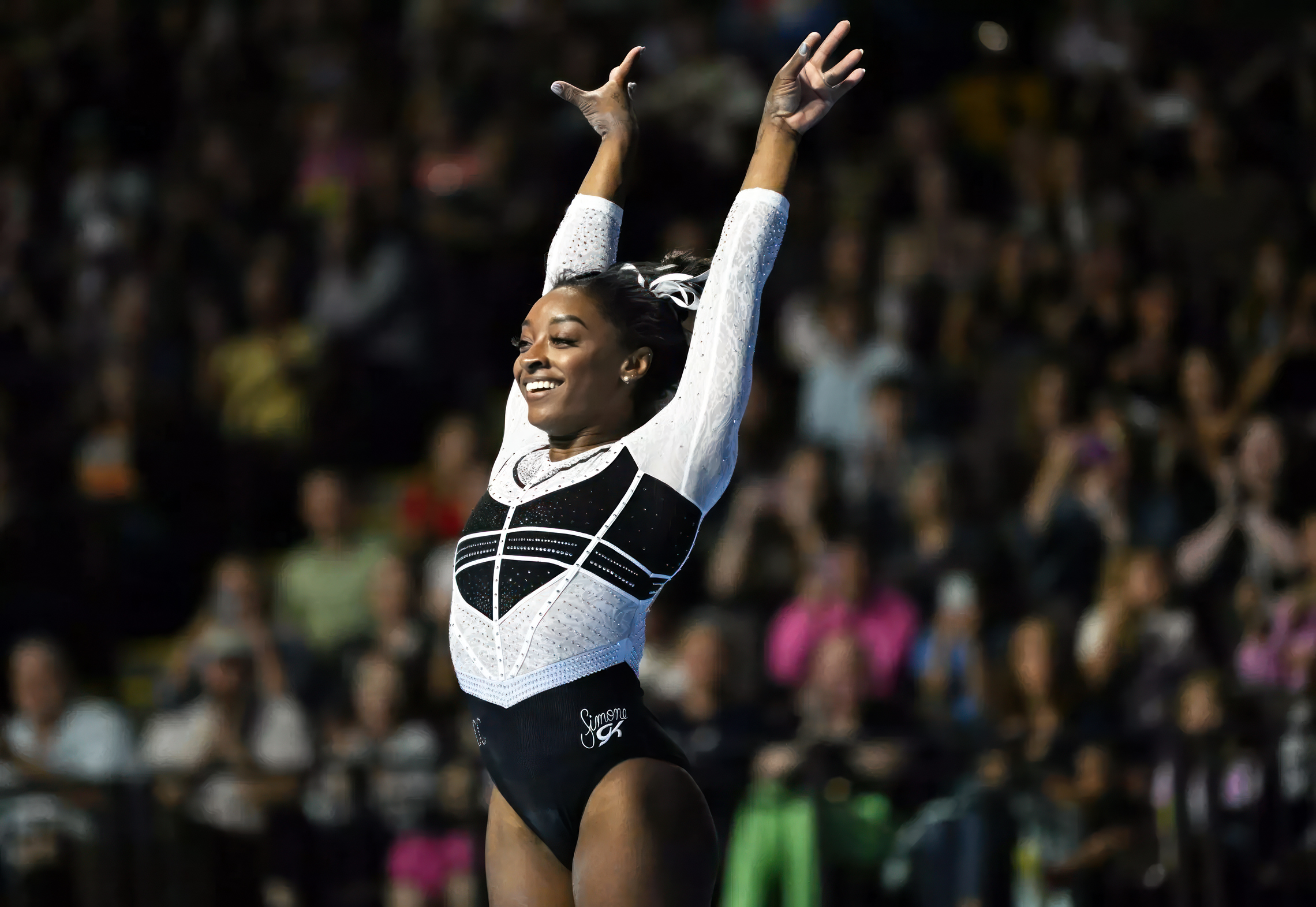
In June 2023, Simone Biles announced plans to return to elite gymnastics competition, two years after her unexpected withdrawal from the Tokyo Olympics due to a disorienting condition. This revelation subtly surfaced when her name appeared on the entry list for the U.S. Classic, a qualifying event for the national championships. Despite the absence of detailed intentions, this move suggests a potential bid for the 2024 Paris Olympics, marking her first step toward that goal. Biles, previously undefeated in all-around competitions since 2013, withdrew from defending her titles in Tokyo only to return and clinch a bronze medal in the balance beam final. She has not competed since then.
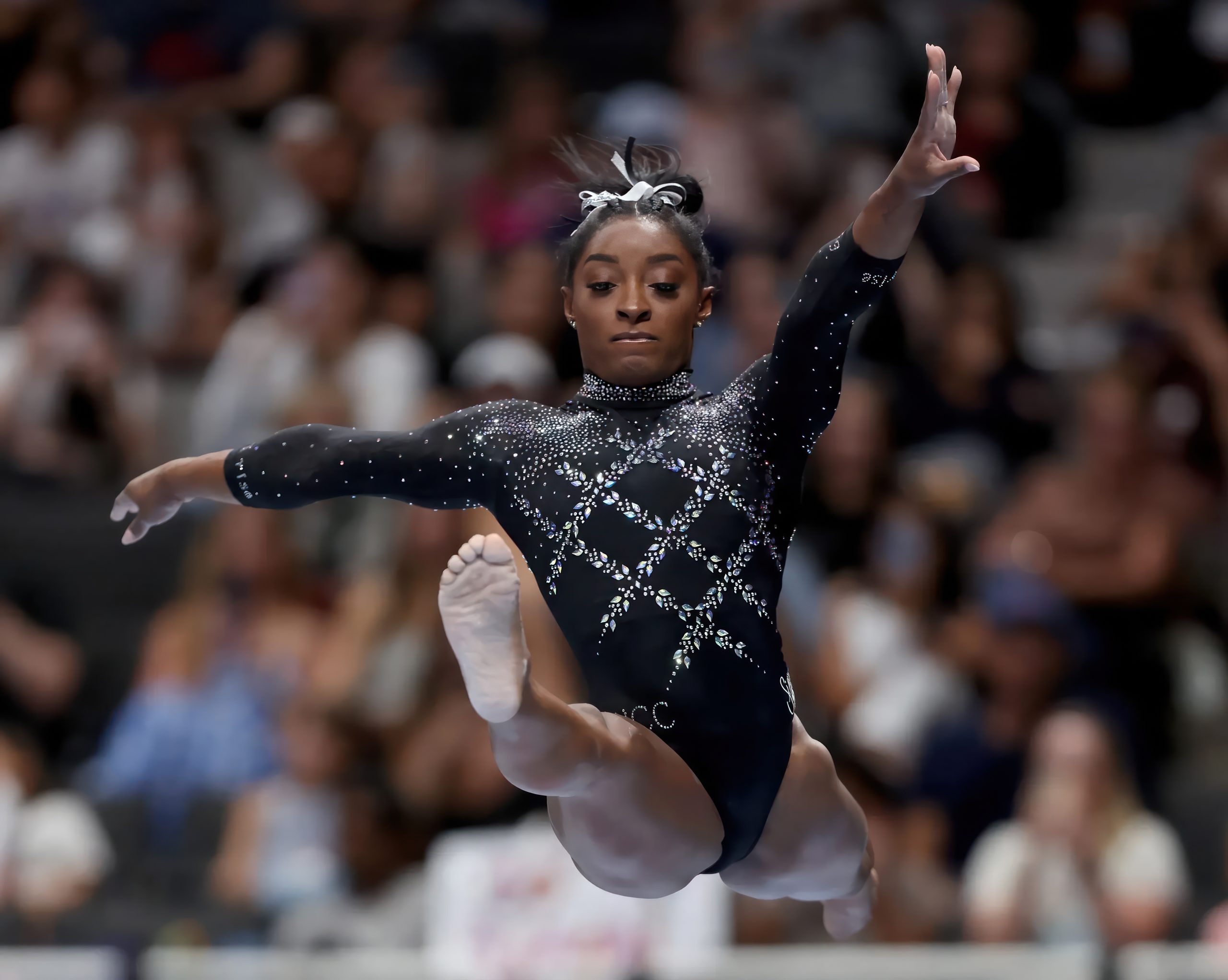
Radiating resilience and skill, Simone Biles made a triumphant return to elite competition in August 2023, besting the field by five points with a 59.100 all-around total more than two years after her last elite meet at the 2020 Tokyo Olympic Games. Demonstrating both her unparalleled legacy and adaptability, Biles confidently landed the highly challenging Yurchenko double pike – a feat she had been preparing for prior to the Tokyo Games but had not performed since the official Olympic warm-up. With a performance that effortlessly qualified her for the upcoming U.S. championships, Biles showcased a strategic approach, integrating simpler yet soaring routines that align with the contemporary gymnastics rulebook.

In a continuation of her awe-inspiring journey, Simone Biles clinched her eighth U.S. all-around title just weeks after her stellar performance at the U.S. Classic. At 26, she not only became the oldest gymnast to achieve this distinction but also shattered a 90-year record by becoming the first American gymnast to secure eight national all-around titles. Demonstrating her unmatched prowess and consistency, Biles executed a near-flawless Yurchenko double pike vault, reminiscent of her recent elite competition. While her scores and accolades speak volumes, Biles remains grounded, emphasizing her passion for gymnastics and maintaining an air of mystery regarding her future endeavors.

In October 2023, Simone Biles clinched her 21st world championship gold medal at the World Artistic Gymnastics Championships in Antwerp, Belgium. At 26, she won her sixth all-around title. With this achievement, Biles surpassed Vitaly Scherbo’s record, becoming the most decorated gymnast, male or female, in the combined history of the Olympics and world championships.
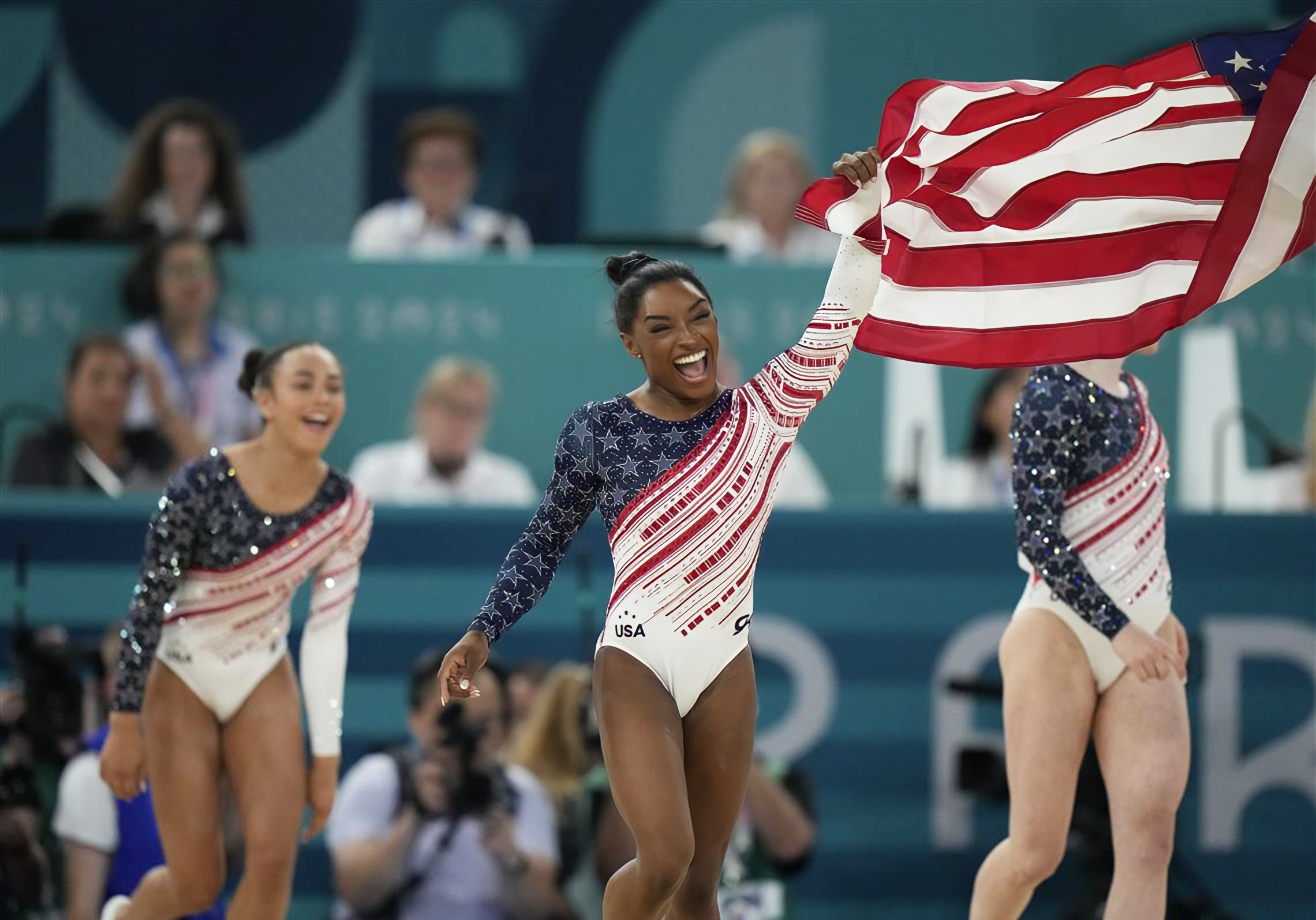
At 27, Simone Biles competed in her third consecutive Olympics in Paris 2024, winning three gold medals: in the team final, women’s all-around, and vault, as well as a silver medal in the Women’s floor event. This brings her total to eleven Olympic medals—seven gold, three silver, and one bronze—the most for any American gymnast.

The gravity-defying performances of gymnast Simone Biles have placed her in a class by herself, demolishing previous standards of difficulty and inspiring the awe of coaches, competitors and former champions.
Her life might have turned out very differently. At the age of two, she and her siblings were taken from their drug-addicted mother and placed in foster care. Adopted by her grandfather and his wife, she was introduced to gymnastics during a day-care field trip at age six. Her talent was evident from the beginning, but in her first adult competitions, she suffered her share of mishaps. Only three weeks after a particularly disastrous showing, she won her first U.S. Championship, and two months later, a world title. Since then, she has not lost a meet, winning four national and three world championships.
At the 2016 Olympics, she won four gold medals, one as a member of the women’s championship team, and three more in the all-around, vault and floor exercise categories. At the 2019 World Championship she won five more gold medals — placing first in balance beam, vault, floor exercise, all-around, and as a member of the wining team. These victories boosted her total number of medals in World Championship competition to a record-breaking 25, in addition to her Olympic gold. She is now the most decorated competitive gymnast in history.
How did you first become involved in gymnastics?
Simone Biles: So I was six years old, whenever I went on this daycare field trip, and all I can really remember is, the gym that I went to, it was split into two sections. So the front of the gym was like the rec, and then the back gym where all the team girls were working out — and I remember being on a trampoline, kind of like peeking through because there was a wall that divided it, but it was really just the bathrooms. So I remember peeking back, and I would see these girls on the tramps and on the beams, and all that tumbling and flipping, and I was like, “I think I can do that.” So then I started copying them, and then a coach came over and was like, “Have you ever done it?” And then they just sent a letter home. It’s kind of a blur because I didn’t think in that moment my life would have changed and I would be who I am today. So it’s like, you don’t really remember it too much.
I started setting goals in gymnastics, thinking what did I want to do with the sport. As I progressed and got older, I started setting more goals. And whenever – I was around 14 years old — I made a lot of sacrifices. I decided to give up public school, go to homeschool. I gave up all the school dances. I’ve never been to a prom. Never done a lot of those things that maybe most of your kids are doing or want to do. But I fell in love with the sport. So I guess that’s what I got out of it. I got to go to World Championships; I got to go to the Olympics. I got to live out a lot of dreams that most kids dream of since they were little kids in Mommy and Me classes. So I’m very grateful for that. But it also made me set goals at a very young age, which I can’t be more proud of.
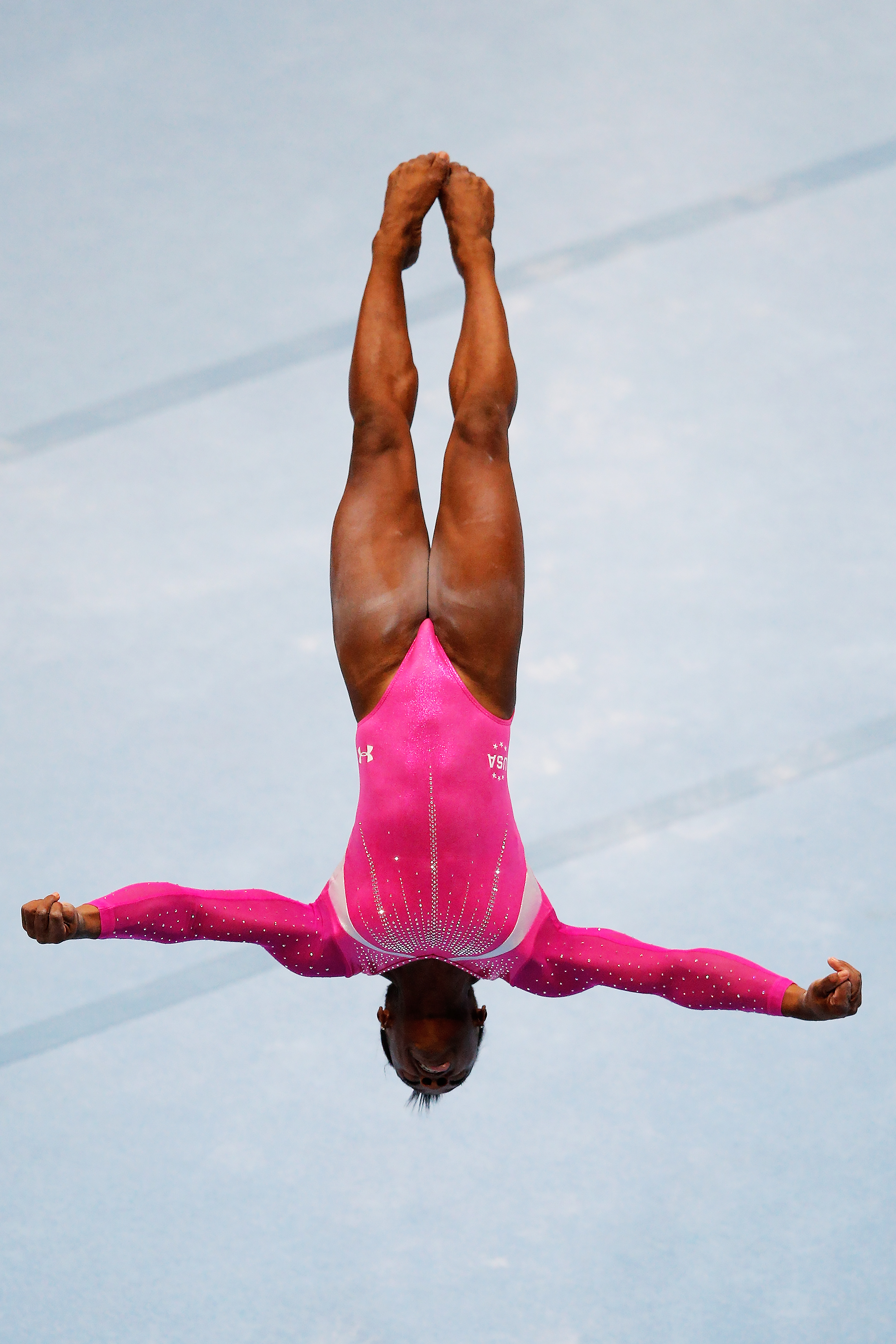
Speaking of setting goals, we understand you have an annual routine with your mom where you write this all down.
So whenever I started really progressing in gymnastics and getting good, she would call me into the office, and at the beginning of every year we would sit down; I would write down my goals — short-term and long-term — and then it just kind of started being a thing, so that you have a visual so that you’re not just chasing after one big thing, and you never know if you’re going to get there. Because there are always little steps that you have to get before you reach the bigger goal, and sometimes it’s easier to see it if you write it down on paper.
We all have to deal with setbacks and disappointment in our lives, but as a competitive gymnast you succeed or fail in a very public way. You can literally fall on your face.
Simone Biles: I think most of the time, whenever we fall on our face or whatnot, it’s so embarrassing for ourselves, so we try not to think back to those moments. But then you can go back, and you’re like, “That’s the exact moment that I wanted to change what I was doing so I could be more successful.” Or you thought, “I’m never going to let that happen again.” So you almost use it as like ammo to be better, and to not let that happen, because it is very stressful and embarrassing, and it’s just not fun, and it hurts. So we try not to do that, but those moments always make us stronger and build us into the person that we want to become.
Simone Biles: I feel like we have our ups and down, as every athlete does, and every athlete has almost a breaking point where you’re just like, “Is it even worth it?” But I feel like even in those moments, you have people that surround you that don’t let you give up, because it’s not easy doing a sport for so many years, and then just giving up on a bad day. So I think if you give up on a bad day, it just kind of shows who you are, so we always want to push through those bad moments. But there are moments when you don’t know if you can succeed like you want to, or your goals are out of reach and your dreams, and it’s saddening, but then you have the support system around you to remind you that you can do it.
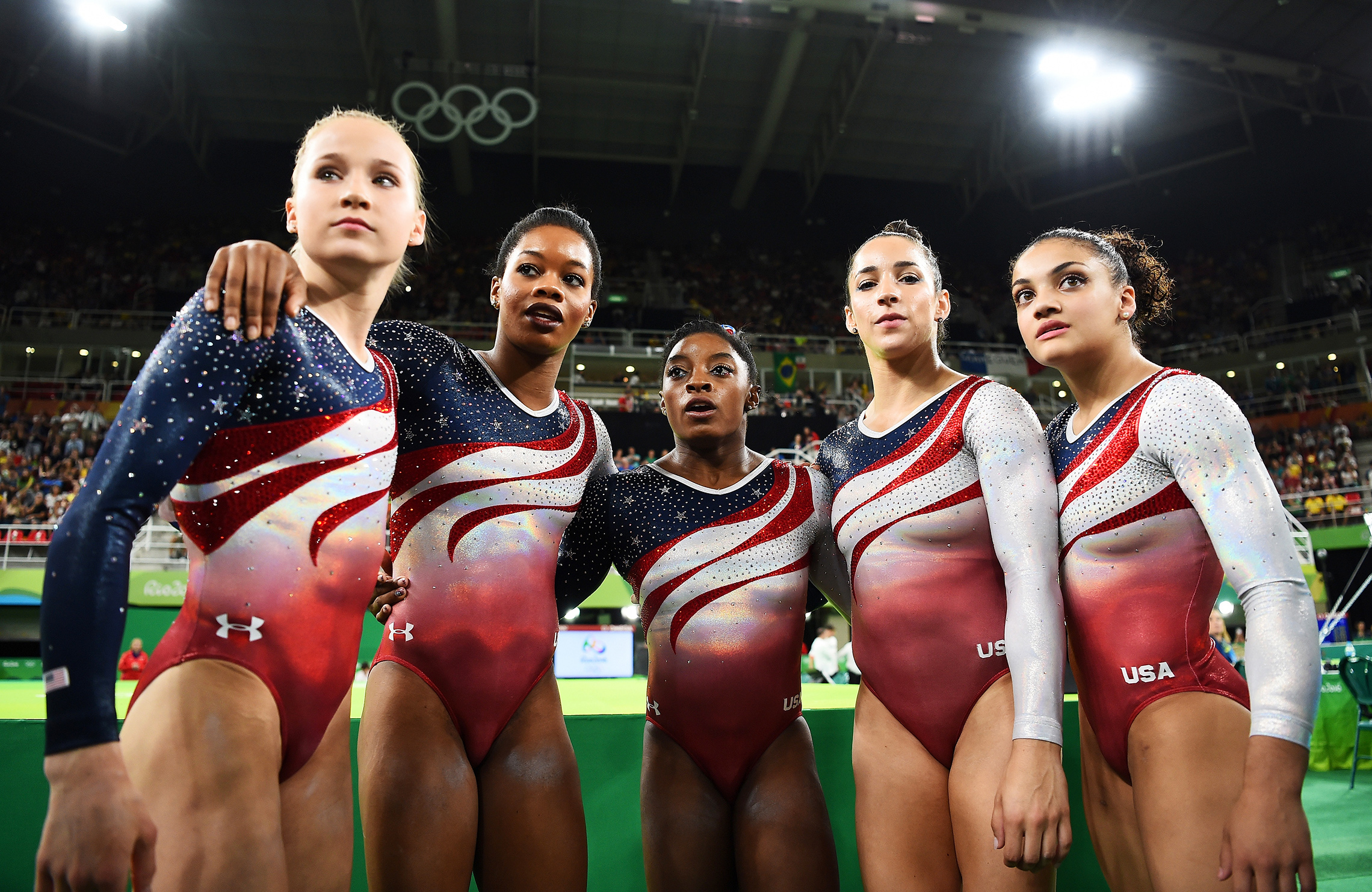
You’ve had to recover from some major setbacks yourself. You had a particularly difficult time at a competition in 2013, didn’t you?
It was at a Classics, and I was kind of all over the place, falling on bars, and then I fell on the floor, got pulled from vault. And then one of those years, I also didn’t make National Team. So that was a huge letdown for myself. But then I remember, I was, like, bawling that night, and then my parents tried to talk to me, and it, like, wasn’t working. And I was like — it was just really hard. And then my brother called me. He’s like, “You know what? There’s always next year. Don’t give up.” Because I think in that moment, and that time, I didn’t really want to go on with it because I had failed. At least I thought I had at that young of an age.
You introduced a whole new move in gymnastic competition. How did that come about?
If you watch any of my floor routines, it’s usually my second skill. It’s called the Biles. You guys won’t clearly understand this because it’s gymnastics terms. But what I’ll go on to do, I’ll do a double layout — which is I’ll do two flips with a straight body — and at the very end of it I do a half turn. So if you watch my floor routine, that’s the second skill that I do.
Simone Biles: We made it up out of almost an injury. I partially tore my calf muscle one time, attempting an extra half twist in my skill list, and then my coach was like, “Well, maybe if you do a half twist, nobody’s ever done that before, and it will take the stress off that landing of your calf muscle. So let’s just play around in the gym with this.” And he’s like, “And nobody’s ever done it.” So then we started playing around with that, and then there’s a whole process to doing the skill, and all of that, and getting it named after you. You have to be the first — or even if two people try it, then they kind of base it off of who did it better — who has the higher score, and all of that, because that’s happened before if you’re both at the same world championships doing the same skill. So there’s a lot made up about it, but mine was kind of like from an injury standpoint and taking the pressure off of it.
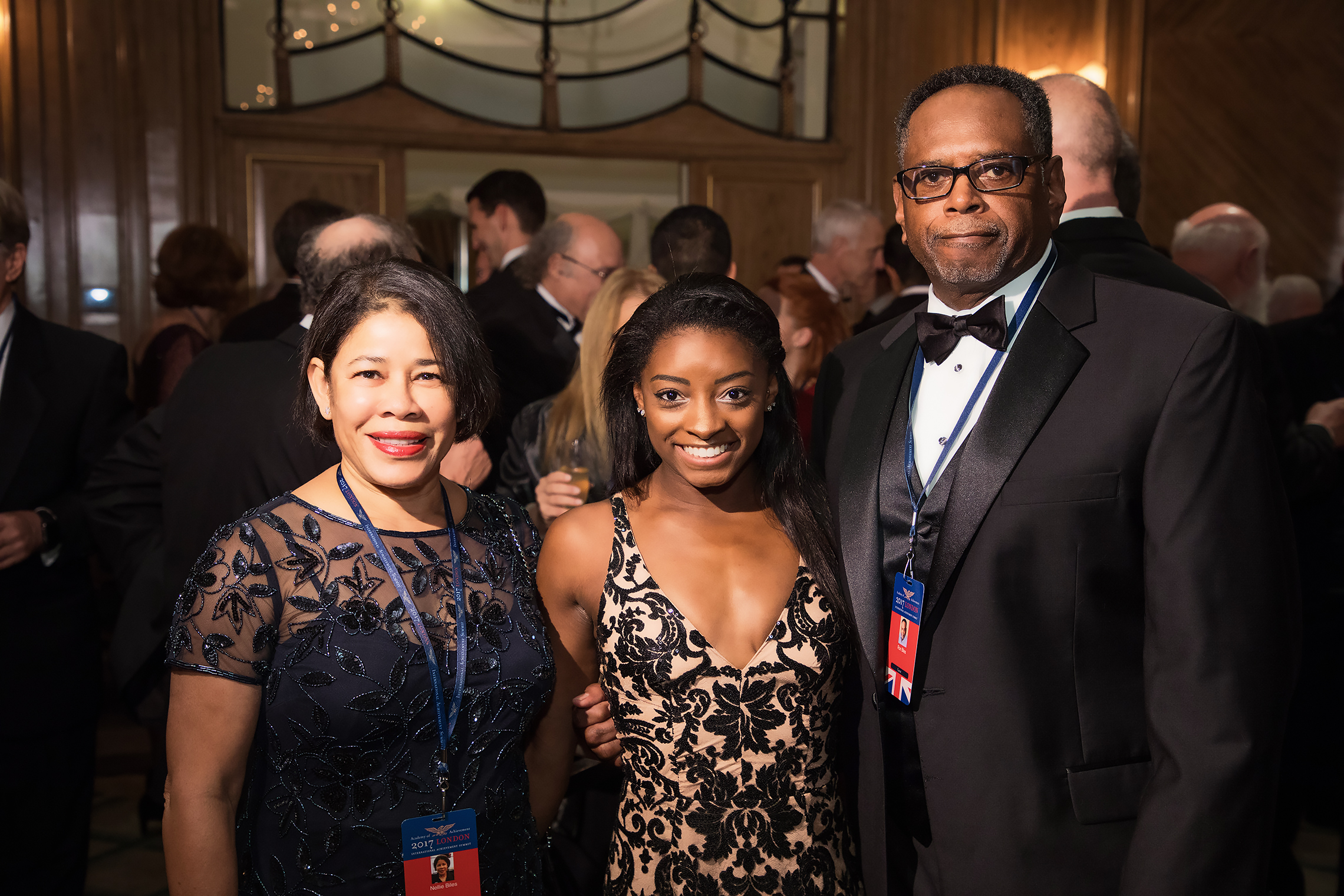
What was it like, after all these years of preparation, actually being at the Olympics? Can you remember it clearly or is it all a blur?
Simone Biles: I feel like, leading up to the Olympics, whenever we got in the Village and we got all settled, all the practices, they kind of go as a blur. And then you’re there at podium training, and then at qualifications and all that, and it’s like a blur. But all-around finals and team finals, I remember exactly, and it’s just like, even afterward, standing up on that podium hearing it, it just replays in your head and you don’t even know what to think. It doesn’t feel real.
You are so dominant in your sport now, that the other girls are essentially competing for second place. Does that affect your relationship with the other gymnasts?
Simone Biles: I feel like none of us are competitive towards each other because we realize we’re stronger as a team, rather than individually. So it’s kind of hard to compete against everybody else. And I think we all get that, when we’re on the floor, we’re competing against ourselves, because that’s the healthiest competition. Yes, we’re all good friends. So we all understand, and we’re rooting for each other as well as yourself. So we all understand, because it’s a hard sport, and it’s dangerous, so we want the best for each other. As we do, we hope we go out and we do what we are trained to do.
You’ve been taking a year off since the 2016 Olympics before you start training again for 2020. How did it feel being out of your normal routine?
Simone Biles: It feels kind of crazy how fast a year went by because the year of the Olympics — it even goes by — but then afterward you kind of feel like you’re doing everything at once, and then you look back and you’re like, “It’s been a year? Did I enjoy my time off?” Which I did. I enjoyed it so much. It just went by faster than you think, because you think, “A year? Oh, that’s a long time!” It went by so fast. But I’m excited to get back into training and get back into the working mode, just because I’ve been doing so many things that are different and out of my comfort zone, that you sometimes are ready to get back into it.
What will a typical day be like for you when you go back into training for the next three years?
Simone Biles: It usually consists of two training sessions, usually both three or four hours. So depending — I don’t know what it’s going to be like in the beginning — just because I’ve never taken a break in my life off gymnastics, and I’ve taken a year, so I’m pretty sure I’ll start out with one session a day, maybe two. We don’t know yet. But usually, it would consist of getting up at eight, being at the gym at nine, and then I would go nine to twelve, have a three-hour break, and I would usually do school or do therapy, and then go back to the gym from either three to six or three to seven. And then go home, eat, bedtime and then repeat.
What core value do you think accounts for your success at this early age? Is it fearlessness?
Simone Biles: I feel like it would either have to be that or confidence…
Everyone around you can tell you, “Oh, you can do this,” but then whenever you really start to believe in yourself, that’s when it comes to life. But you also have to be a little bit fearless, because at a very young age I chose what I wanted to do. And not knowing the outcome, thankfully it happened the way I wanted it to, but some people aren’t as fortunate or an injury stops them or whatever it is. So it’s kind of like, you have to be fearless of knowing not what the future is or what it holds for you.
